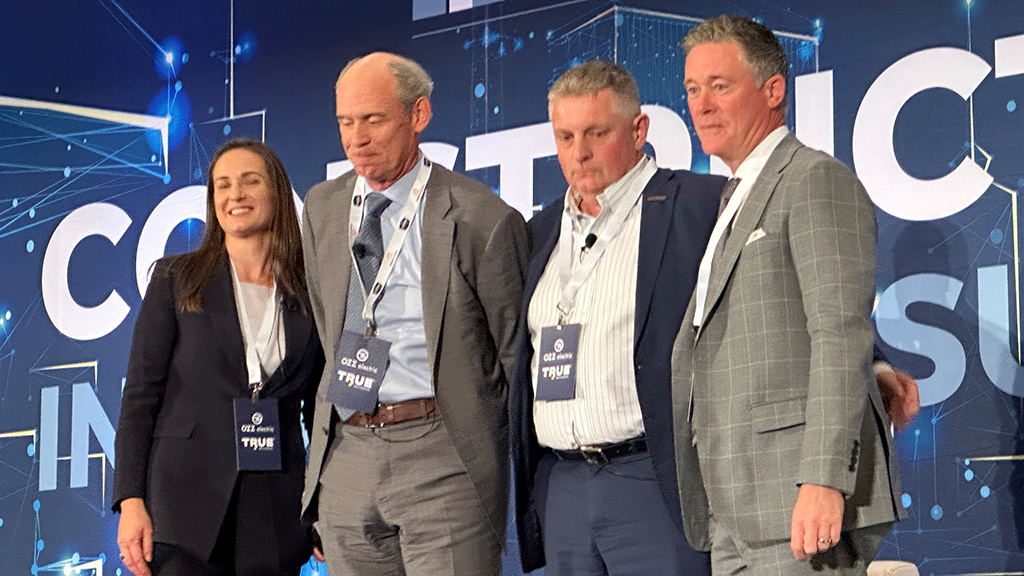Canadian construction leaders shared their thoughts on risk, disruption and opportunity at a recent innovation summit.
Graham Construction president and CEO Andy Trewick, EllisDon president and CEO Kieran Hawe and Ledcor president Jeff Watt all shared their insights with Beedie executive vice-president and panel moderator Beth Berry at the Leading the Way: Innovation and Leadership in Construction session at the Independent Contractors and Businesses Association (ICBA)’s Construction Innovation Summit recently.
All three panellists pointed to increasing risk and construction costs as changing how they approach projects.
“It’s unprecedented how many people in your network have run a $1 billion project and how many of them retired during COVID. It’s a shrinking list,” Hawe said.
“Not every contract has the same risk transfer and nobody wants to have the conversation over who the risk resides with, rather than the taxpayer who is paying for it.”
This can lead to a more selective approach, said Trewick.
“We’re very selective on which projects we’ll look at and which we won’t. We immediately look at a project and think ‘is it worth doing?’ But before we get to that place we often lobby to get a project broken into components which could make for a better project,” he said.
“But on other side, owners aren’t sophisticated themselves and can’t manage multiple projects (so they) end up putting it all in one bucket.”

Watt echoed the others concern about risk but said it presented an opportunity for stakeholders to pick and choose.
“Since resources are limited all projects aren’t going to be built and all contractors, regardless of size, will be more selective, meaning we can negotiate more effectively,” he said.
He added big projects are also difficult to manage and don’t present many opportunities for training.
“Staff get pigeonholed into one activity and don’t get the jack-of-all-trades knowledge you do on small projects,” he said.
All three said there are similarities in the ways big and small companies handle disruption but that the scale of their operations helped to weather change.
“It doesn’t make a difference how large an organization is, a lot of attributes that make business successful are the same,” Watt said, but added Ledcor works across North America in various industries creating resilience against disruption.
“There are so many similarities in the ways small organizations tackle business to what we do,” Trewick said.
“As one market is progressing another might be declining. We have to be able to get through that and also have to be nimble and react to those conditions.”
Hawe said EllisDon navigates change by creating software management in-house with “200 people in Toronto constantly putting pilot programs in front of projects.”
“We generally have three to four projects in field tests and they either pass the smell test or they don’t. We also interview startups, and these applicants want to work with us because at scale we can push it out for them,” he said.
Another component of leadership, Beedie said, is talent development and retention and the panellists indicated making new employees feel included is a key concern.
“Work-life integration is a challenge to the industry, so you have to drive home how important being in the office is to the industry and culture but have to provide a safe space for them and for diversity inclusion,” Hawe said.
“Our challenge is, do people see the opportunities in our organization today? You don’t have to leave Graham and we have the opportunities but we don’t always see it,” Trewick added.
Hawe stressed the importance of letting employees know a range of opportunities within the organization are available.
“We always tell that to employees coming in. They need to know they have opportunities and it’s not just going from the office side to the field side,” he said.
Watt said the industry is to blame for not better informing the public of the viability of a construction career.
“There’s a little bit here for everyone. You don’t get very many industries like ours, but we don’t do a good job of telling that story. Companies can’t be too prescriptive in terms of the project and career path they have,” he said.
“We’re employee-owned and there’s nothing like everyone having skin in the game.”











Recent Comments
comments for this post are closed